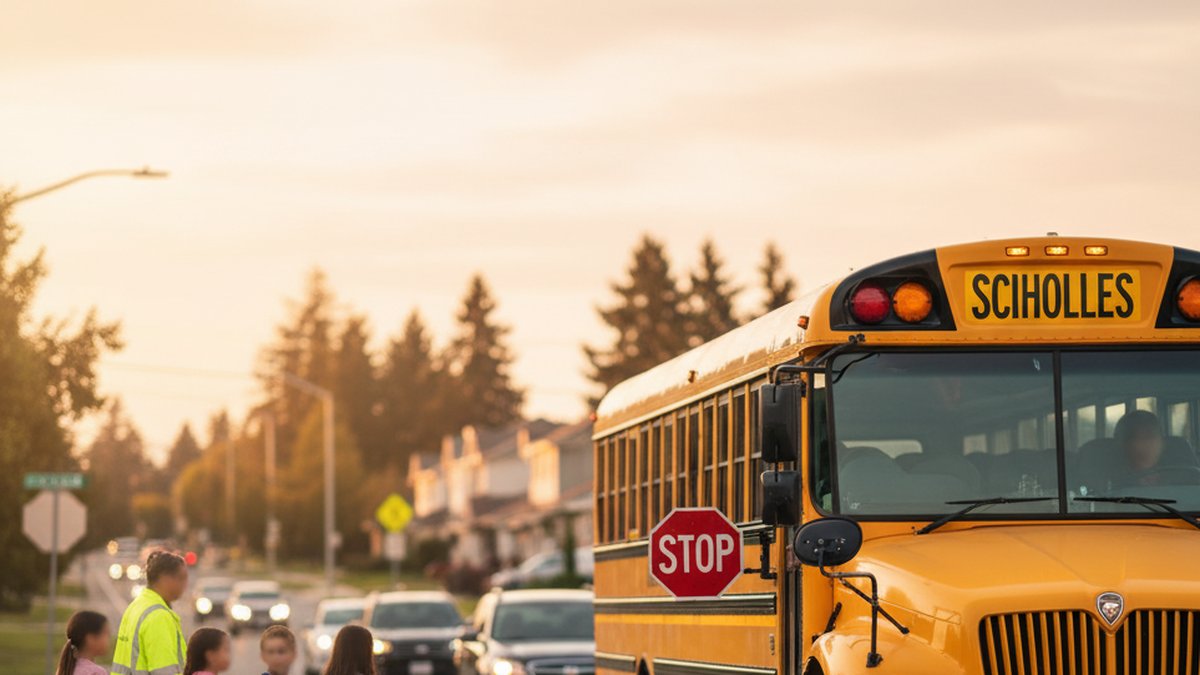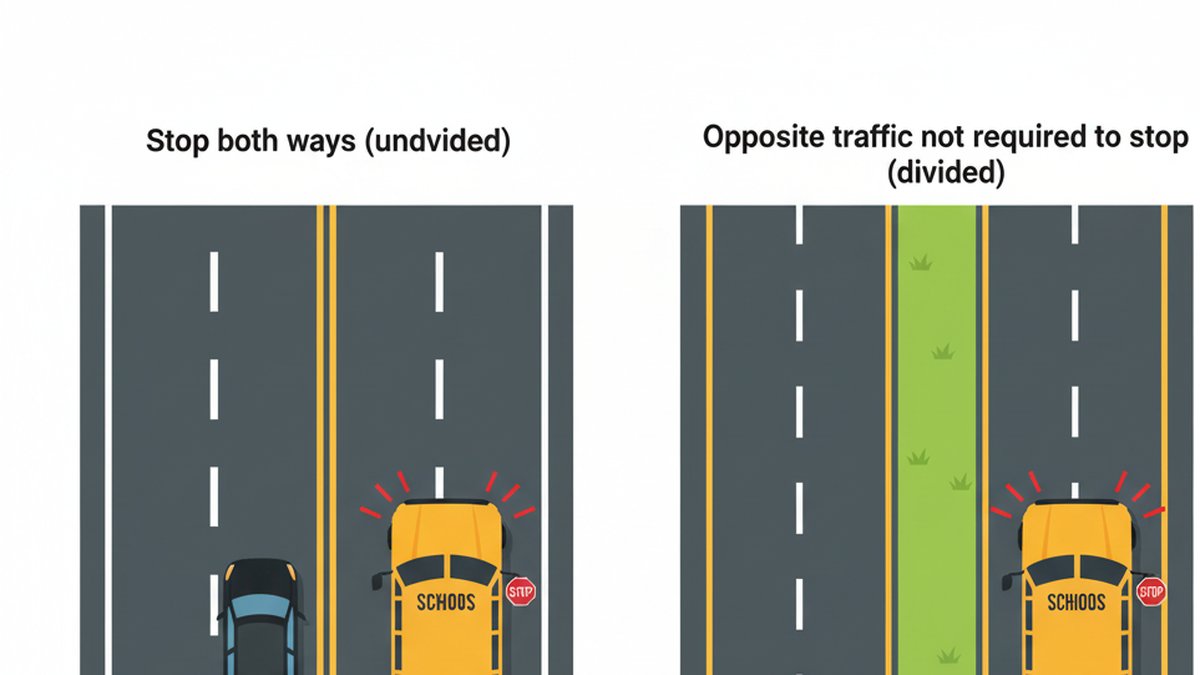School Bus Stop Laws: Both Directions? [2025 Guide]

Every driver knows the sight: flashing red lights, an extended stop arm, and children crossing near a school bus. But do you have to stop if you're traveling in the opposite direction? The answer depends on the type of road, and misunderstanding can lead to serious penalties.
General Rule: Stop in Both Directions
In most situations, all traffic must stop for a school bus when it has its red lights flashing and stop arm extended. This applies to:
- Two-lane roads
- Multi-lane undivided roads
- Roads with only painted center lines (no physical barrier)
The purpose is simple: protect children who may cross from either side. Even if you're going the opposite direction, you must stop and remain stopped until the bus turns off its red lights and retracts the stop arm.
What qualifies as an undivided road?
An undivided road is any roadway without a physical barrier or raised median separating opposite lanes. This includes:
- Single painted yellow lines
- Double yellow lines
- Painted turn lanes in the center
On these roads, traffic in both directions must stop at least 20–25 feet from the bus (distance varies by state).
Median Exceptions on Divided Highways
The key exception applies to divided highways: roads with a physical barrier or raised median separating opposite traffic flows. In most states, if you are traveling in the opposite direction on a divided highway, you do not need to stop for a school bus.

What counts as a physical barrier?
- Concrete or metal barrier
- Raised concrete median (at least several inches high)
- Grassy median or earth berm
What does NOT count:
- Painted lines or hatched areas
- Rumble strips
- Smooth-paved center turn lanes
If you're unsure whether the median qualifies, err on the side of caution and stop. The cost of a ticket and the risk to children far outweigh any time saved.
State-by-State Variations
While the general rule is consistent across the U.S., some states have specific nuances:
States with Stricter Rules
- New York: Requires all traffic to stop on divided highways unless there's a barrier and the bus is on the opposite side of the barrier.
- West Virginia: All traffic must stop regardless of road type unless explicitly signed otherwise.
States with Standard Divided Highway Exceptions
The majority of states (including California, Texas, Florida, and Illinois) follow the standard rule: opposite traffic need not stop on divided highways with physical medians.
Local Ordinances and School Zones
Some cities impose stricter requirements in school zones or residential areas. Always watch for posted signs and local regulations.
Penalties for Illegal Passing
Illegally passing a stopped school bus carries serious consequences because of the risk to children:
Typical Penalties
- Fines: $250–$1,000+ depending on the state and offense
- Points: 4–6 points on your driving record
- License Suspension: Possible for 30–180 days, especially for repeat offenses
- Criminal Charges: Misdemeanor or felony if injury or death occurs
Enhanced Penalties
Many states have recently increased penalties or added automated enforcement (bus-mounted cameras) to catch violators. Some jurisdictions allow school bus drivers to report license plates directly to law enforcement.
Practical Tips for Drivers
- Always be prepared to stop when you see a school bus ahead, especially during morning and afternoon hours.
- Watch for flashing yellow lights on the bus—these signal the bus is preparing to stop.
- Stop at least 20–25 feet away from the bus to give children space to cross safely.
- Do not proceed until the red lights stop flashing, the stop arm is retracted, and the bus starts moving—or the driver signals you to pass.
- When in doubt, stop. It's always safer to stop unnecessarily than to risk a child's life or a hefty fine.
Frequently Asked Questions
Do I have to stop for a school bus if I'm going the opposite direction?
Yes, on undivided roads. On divided highways with a physical median, opposite-direction traffic typically does not need to stop.
What counts as a divided highway for school bus stops?
A divided highway has a physical barrier or median separating opposite lanes. Painted lines alone do not count as a division.
What are the penalties for illegally passing a stopped school bus?
Penalties vary by state but typically include fines of $250–$1,000, points on your license, potential license suspension, and possible jail time for repeat offenses.
Fine Amounts by State
First Offense Fines
Most states impose fines ranging from $250 to $500 for first-time offenders who illegally pass a stopped school bus.
California First Offense Example
In California, first-time violators face fines between $250 and $1,000, plus one point on their driving record.
Repeat Offense Penalties
Repeat offenders face significantly higher fines, potential jail time, and longer license suspensions.
New York Repeat Offense Example
In New York, a second offense within three years can result in fines up to $1,000, up to 30 days in jail, and a six-month license suspension.
Conclusion
Understanding when to stop for a school bus is crucial for every driver. The general rule is simple: stop in both directions on undivided roads, and opposite traffic may proceed on divided highways with physical medians. When in doubt, always stop—protecting children is always the right choice, and the penalties for illegal passing are severe.